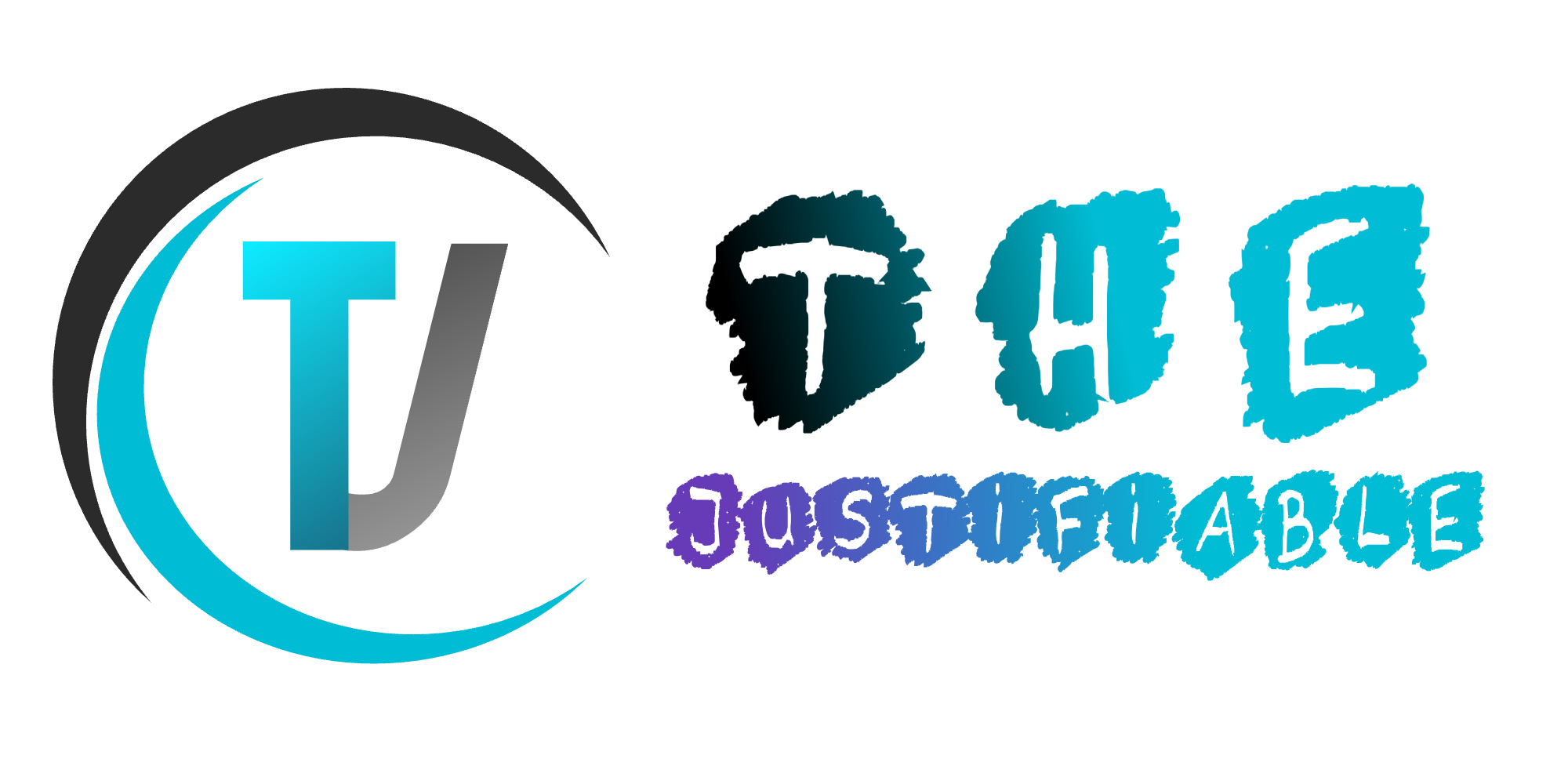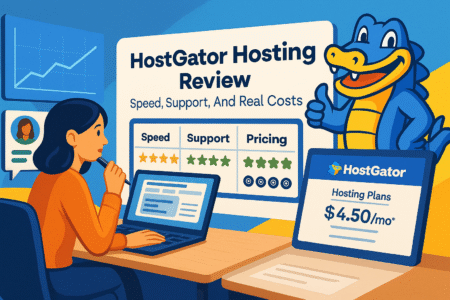Table of Contents
Choosing hosting feels like picking a long‑term partner. You want speed, safety, and real humans who step in when things go sideways. That’s why I often suggest inmotion wordpress hosting to site owners who want strong performance without premium-only pricing.
This guide walks through the tech, the setup steps you can follow today, and the small tweaks that create big wins for load time, security, and reliability.
Blazing Speed Optimizations For WordPress Sites
Fast sites rank better, convert more, and feel trustworthy. InMotion builds speed into the stack so you don’t chase ten plugins to patch slow pages.
Advanced Server-Level Caching Strategies That Cut Load Times
Caching acts like short‑term memory for your site. Rather than ask WordPress to rebuild a page for every visitor, the server hands out a ready version. InMotion’s UltraStack layers multiple types of caching so more work stays in memory and less hits PHP and MySQL.
Here’s how the layers work in plain English. Nginx reverse proxy caching serves static assets such as CSS, JS, images, and fonts from memory.
OPcache stores compiled PHP so code executes instantly instead of compiling on each request.
Object caching keeps common database results handy, which helps dynamic pages such as category archives, search results, and related posts.
Quick setup steps:
- Log in to cPanel > WordPress Manager.
- Toggle Caching to On.
- Open WordPress Dashboard > Settings > Reading and confirm your homepage type so you can exclude cart and checkout pages if you run WooCommerce.
- If you use WP Rocket or similar, leave server caching active; set exclusions for cart, checkout, and my-account paths.
Mini example: a food blog moving to InMotion saw homepage load drop from 3.4s to 1.1s after server cache activation and a tiny ruleset that skipped dynamic WooCommerce pages. No code edits, no theme changes, just correct cache settings and page‑level exclusions.
How SSD Storage And UltraStack Technology Accelerate Performance
Storage speed shapes everything your visitors feel. Spinning HDDs move a physical arm across a platter. SSDs store data on flash chips, which means near‑instant reads and writes. InMotion uses enterprise SSDs across plans, which trims server response time and smooths spikes when a post goes viral.
UltraStack ties several tuned pieces together: Nginx for lean static delivery, PHP‑FPM for faster PHP execution, and optimized MySQL so complex queries finish faster. That trio lowers Time To First Byte, which helps Core Web Vitals and often nudges rankings upward over a few weeks.
Practical tips I’ve used:
- For image‑heavy sites, turn on compression in .htaccess with mod_deflate, then lazy load images in Settings > Media or a performance plugin. SSDs help, though reducing bytes sent helps even more.
- In php.ini editor inside cPanel, confirm memory limit fits your theme and plugins. I like 256M for mid‑sized stores and 512M for heavy page builders with many add‑ons.
If you publish galleries or recipes with long pages, this combo keeps scroll silky and cuts bounce rate for mobile readers on average networks.
Leveraging PHP 8 And HTTP/3 Support For Modern Speed Standards
Modern PHP runs more instructions per second and handles arrays and strings more efficiently. With PHP 8, many sites see requests handled almost twice as fast compared with older versions. InMotion enables recent PHP versions in shared and VPS plans, which means you can flip the switch without migrations.
Steps:
- Open cPanel > MultiPHP Manager.
- Select your domain.
- Choose PHP 8.x and apply.
- Visit Dashboard > Tools > Site Health to confirm extensions and spot plugin incompatibilities.
On the network layer, HTTP/3 rides on QUIC, which improves performance for visitors with flaky mobile connections or high latency. Handshakes shrink, head‑of‑line blocking drops, and parallel streams flow more smoothly.
You don’t need to flip anything; InMotion handles this at the edge. Expect a small but real improvement in the “first paint” moment, especially on 4G connections during commute hours.
Robust Security Framework To Protect Your WordPress Data

Speed attracts visitors, security keeps them safe. InMotion layers defenses so routine threats get handled before you even log in.
Proactive Malware Scanning And Automatic Threat Mitigation
Threats often hide inside themes, plugins, or uploads. InMotion runs real‑time malware scanning and quarantines suspicious files so they can’t execute. You can also kick off manual scans when you push big changes.
Try this:
- Go to cPanel > ImunifyAV.
- Run a full scan after theme updates or when adding custom code.
- Review the list, then click Clean Up for flagged files.
A real example from my notes: a client installed a “free” premium plugin that included a hidden backdoor. The scanner quarantined the file within minutes. We replaced the plugin with a licensed copy and restored normal access without a full rollback.
Practical habits that reduce risk:
- Use Dashboard > Updates weekly; patching closes common holes.
- Remove unused plugins and themes. Less surface area means fewer issues.
- Enforce strong passwords under Users > Profile and enable two‑factor authentication with a well‑known security plugin.
SSL Certificates And DDoS Protection For Total Site Safety
Encryption is table stakes. InMotion includes a free SSL certificate so logins, forms, and checkouts stay private. Many hosts charge extra for this basic protection; you don’t need to factor in an extra line item here.
Check status:
- Open cPanel > SSL/TLS Status.
- Confirm your domain shows a valid certificate.
- If a subdomain is missing, select it and run AutoSSL again.
On the network front, DDoS filtering blocks junk traffic from overwhelming your site. That matters during promotions, launches, and holiday spikes when attackers often probe checkout paths. With filtering in front of your application, organic shoppers keep moving while junk packets get tossed aside.
For stores, I suggest pairing InMotion with Cloudflare’s free plan. Route DNS through Cloudflare, turn on Under Attack Mode only during obvious floods, and enable Bot Fight Mode. This extra layer plus InMotion’s stack gives strong resilience without a big bill.
Regular Backups And One-Click Restore For Peace Of Mind
Backups are your parachute. InMotion creates automatic daily backups and stores them off‑server, which protects you from disk failure, corrupted updates, or risky experiments.
Workflow I use:
- Before major updates, open cPanel > Backup Manager.
- Click Create Backup for an on‑demand restore point.
- Apply updates in staging first (more on staging soon).
- If something breaks in production, restore files or database with one click.
Granular restore helps when only media or a single table needs attention. You avoid full site rollbacks, which protects orders and comments posted since the snapshot.
Small scenario: a membership site pushed a new plugin that clashed with a gateway. We restored only the plugin directory and options table. Members noticed nothing, and support tickets stayed near zero.
Reliable Uptime Backed By Enterprise-Grade Infrastructure
Every minute offline chips away at trust and revenue. InMotion targets 99.99% uptime so customers can read, shop, and register without hiccups.
Understanding InMotion’s 99.99% Uptime Commitment
That figure translates to less than an hour offline across a year. The platform tracks host health constantly and alerts engineers the moment metrics leave normal ranges. Transparent status pages and incident notes help you understand rare blips rather than guess in the dark.
Why this matters:
- Search engines check sites often; frequent outages can dampen crawl frequency.
- Live campaigns need stable landing pages so ad spend doesn’t burn.
- Subscription churn often rises when login portals stall.
Practical check:
- Use an external monitor such as UptimeRobot.
- Set 1‑minute checks and alerts to email and SMS.
- Watch trend lines for slow response, not only outright outages.
Redundant Data Centers And Network Failover Technology
Redundancy means spare everything: power feeds, cooling loops, network paths, edge gear. InMotion operates multiple U.S. data centers with failover on core systems. BGP routing shifts traffic along the next healthy path when an upstream route degrades.
Real effect: a fiber cut in one region no longer equals a dead site. Traffic shifts to open routes while your application keeps working. If your audience clusters on one coast, you can choose that region during signup so latency drops a bit for local users.
Tip for global audiences:
- Enable a CDN and cache static assets across regions.
- Keep fonts and hero images light; CDNs help, though bytes still matter.
How InMotion Minimizes Downtime During Maintenance
Hardware ages, kernels receive patches, and firmware needs refreshes. InMotion schedules work during low‑traffic windows and often swaps components without taking servers offline. When a brief window is required, notices arrive ahead of time so you can plan.
How to stay informed:
- Keep your account email current.
- Subscribe to status alerts from the provider’s status page.
- Place a banner on your admin calendar with scheduled windows so teammates know to avoid heavy edits.
Expect windows to run for minutes, not hours. Staging plus the backup routine above turns these windows into non‑events for your visitors.
WordPress-Specific Features That Simplify Site Management
WordPress should feel simple. InMotion packs easy setup tools, safe update flows, and developer conveniences that save hours each month.
One-Click WordPress Installation And Automatic Updates
Skip manual uploads and database creation. During checkout, select Install WordPress and log in to a fresh dashboard when the account goes live. Inside WordPress you can control update behavior with fine‑grained choices.
Practical configuration:
- Visit Dashboard > Updates and tick Enable automatic updates for minor versions.
- For plugins, open Plugins > Installed Plugins, click the auto‑update toggle for low‑risk utilities such as SEO, analytics, and antispam.
- Keep complex page builders and theme frameworks on manual control; run those in staging first.
Softaculous inside cPanel also offers a scheduled backup during plugin updates. I like weekly schedules for small sites and daily schedules for stores.
Featured‑snippet answer:
- Turn on core auto‑updates in Dashboard > Updates.
- Auto‑update safe plugins from Plugins list.
- Test major theme updates in staging.
- Keep a backup before big changes.
WP-CLI And Git Integration For Developer-Friendly Workflows
WP‑CLI lets you manage WordPress with commands. Updates, user management, and search‑replace become quick, repeatable tasks. InMotion supports WP‑CLI access, which shortens routine maintenance.
Commands I run often:
- wp plugin update –all to patch everything in one go.
- wp search-replace ‘http://oldsite.com’ ‘https://newsite.com’ when moving to HTTPS or a new domain.
- wp user create editor jane jane@example.com –role=editor to add an editor account without loading the dashboard.
Git support enables fast, safe deployments. Team rhythm I like:
- Developers push changes to a staging branch.
- QA signs off in the staging site.
- A fast merge triggers deployment through a pull in the server repo.
- Clear changelogs live inside the repo, not scattered across chat threads.
This setup reduces “it worked on my machine” moments and shortens rollbacks when a change needs reversal.
Built-In Staging Tools For Safe Testing And Deployment
Staging offers a copy of your site for experiments. No pressure, no risk to revenue. InMotion makes clone‑and‑push easy inside cPanel > WordPress Manager.
Typical flow:
- Click Create Staging for the chosen domain.
- Apply theme updates, plugin upgrades, or custom code in the staging copy.
- Run Pagespeed.web.dev tests and check checkout or membership flows.
- Push to live with one click once everything passes.
What to test every time:
- Cart, checkout, and account pages for stores.
- Forms and email signups for blogs and lead funnels.
- Login and content gating for membership sites.
This habit slashes white‑screen surprises and keeps campaigns on schedule.
Scalable Hosting Plans Designed For Growth
Traffic grows in bursts. InMotion plans stretch with you so you don’t pay for headroom you don’t use, yet upgrades stay painless when your audience surges.
Choosing The Right Plan Based On Traffic And Resource Needs
Pick a plan that matches current needs, not dream numbers. For small blogs, WP‑1000S or WP‑2000S covers a few thousand monthly visitors. For mid‑sized stores and content sites with frequent peaks, WP‑4000S or a managed VPS introduces more CPU, RAM, and concurrent PHP workers. Agencies that host clients under one umbrella gain isolation and control on VPS tiers.
How to check strain:
- cPanel > Metrics > Resource Usage shows CPU, memory, I/O, and faults.
- If CPU or memory sits near 100% during traffic peaks, step up one tier.
- Watch Errors for worker limits and slow queries, which hint at the next move.
Secondary keywords this section naturally supports: WordPress hosting plans, scalable WordPress hosting, managed VPS for WordPress.
Effortless Upgrades Without Service Interruptions
Upgrades run on the provider side with no manual file moves. Your sites and mailboxes remain reachable during the shift. This helps seasonal brands a lot. A retailer can scale resources for November and December, then return to a calmer plan in January.
Smooth upgrade prep:
- Clear caches in WordPress Manager.
- Snapshot the site in Backup Manager.
- Note scheduled promotions so support can time the switch during quiet minutes.
If you run promotions with TV or influencer traffic, tell support your schedule. Engineers can keep an eye on metrics and act fast if concurrency rises beyond normal patterns.
Supporting Multiple WordPress Sites On One Account
Many of us manage more than one site. InMotion allows multiple installs under one account on relevant tiers. Use cPanel > Addon Domains to add a domain, then Softaculous to install WordPress into that domain or a subdirectory.
Organization tips:
- Name staging with clear labels such as staging.domain.com.
- Keep separate backups for each install inside Backup Manager.
- Use domain‑level SSL so every property shows a lock icon.
Agencies can keep client sites isolated with separate users and limited cPanel access, which improves security and reduces accidents.
Expert-Level Support Tailored For WordPress Users

Great hardware matters, though people make the difference when issues appear at the worst time. InMotion’s support shines with quick access and staff who understand WordPress beyond generic scripts.
24/7 U.S.-Based Support Via Phone, Chat, And Email
Help is available around the clock through phone, live chat, and tickets. During a plugin conflict, I’ve had a technician walk me through disabling it over SFTP so the site came back within minutes. Straight answers, clear steps, and no endless hold loops.
Save time with this approach:
- Open chat with your domain, recent changes, and exact error string.
- Share steps to reproduce the problem.
- Attach a screenshot of Tools > Site Health so the agent sees environment details.
This context turns twenty questions into a short conversation with a quick fix.
Access To WordPress-Certified Technicians For Complex Issues
When issues touch PHP or database internals, escalation reaches technicians with deep WordPress experience. I’ve seen them spot a slow query inside a membership plugin and propose a tiny index that cut load times from six seconds to under one second during login waves.
What they can help with:
- PHP warnings and fatal errors in logs.
- Database optimization for option tables or postmeta bloat.
- Safe integration patterns for custom code or child themes.
If you maintain custom plugins, ask for a read of your stack trace and slow logs. You may get simple suggestions that unlock a big speed jump.
Knowledge Base And Tutorials For Self-Guided Solutions
Some days you want a step‑through guide without waiting in queue. InMotion’s Support Center includes tutorials for everything from GZIP compression to password resets through phpMyAdmin. I keep a bookmark to backup restoration and an article on changing PHP versions because those save time during late‑night edits.
Self‑help rhythm I like:
- Search “topic + InMotion Support” for quick answers.
- Follow steps, then confirm with Site Health.
- If questions remain, open chat and paste the guide link so you and the agent reference the same steps.
This keeps learning in your hands while leaving a safety net in place.
Competitive Pricing With Transparent Value
Price matters, though total value matters more. InMotion lands in a comfortable middle: strong speed and support without premium‑only rates or surprise upsells for basics.
Breaking Down Plan Costs And Included Features
Entry tiers often land under ten dollars a month on annual terms; mid and upper tiers climb with resources and the number of sites. Every plan includes SSL, SSD storage, email, server caching, and daily backups. Many hosts split these features into paid add‑ons, which complicates budgeting and inflates true cost over a year.
Feature checklist most buyers want:
- Free SSL: included.
- Backups with restore: included.
- Email accounts: included.
- Staging: available in WordPress tools.
- Malware scanning: included.
When you compare apples to apples, the gap between sticker price and real cost shrinks in your favor here.
How InMotion Compares To Other Managed WordPress Hosts
Against premium players such as WP Engine or Kinsta, InMotion often costs less while still offering strong performance for most sites. You might not see every advanced toggle those platforms expose for edge caching or Redis on entry levels, though many businesses never touch those features.
Against bargain hosts such as Bluehost or HostGator, InMotion usually wins on uptime stability, hands‑on support, and built‑in backups. You avoid a maze of paid add‑ons that look cheap at signup then snowball later.
Comparison snapshot for quick scanning:
- Essentials included instead of gated behind add‑ons.
- Real support that handles WordPress specifics.
- Upgrade path to VPS when you outgrow shared plans.
Long-Term Savings Through Free Tools And Services
The freebies add up over a year. A domain credit covers the first year for a new brand, site migrations prevent consultant fees, and backups remove the need for a premium backup plugin on many sites. Malware scanning and DDoS filtering lower risk without a security subscription for basic use cases.
Rough savings estimate many owners see:
- Domain credit: ~$15–$20.
- Migration: often $100 or more elsewhere.
- Backup tool replacement: $24–$60 per year.
- SSL: $0 rather than $60+ per year from third parties.
When you run totals across twelve months, total cost of ownership often sits lower than it appears at signup.
Real-World Performance Benchmarks And User Feedback
Claims mean little without data and stories from real sites. Numbers below reflect patterns I’ve observed as well as results from common testing tools used on fresh installs and tuned themes.
Speed And Uptime Test Results From Independent Sources
Fresh WordPress installs on SSD storage with server caching often show sub‑second load for simple themes. Time To First Byte can land near 200–300ms under light load conditions, which supports fast First Contentful Paint moments. Uptime tracking across months tends to sit at 99.98–99.99%, with brief maintenance windows announced ahead.
How to test your own site:
- Run GTmetrix and note TTFB, fully loaded time, and waterfall shape.
- Run PageSpeed Insights and track Field Data once you gather visits; Lab Data helps while you tune.
- Use UptimeRobot with 1‑minute checks so you can see trends rather than rely on gut feeling.
Tiny tweaks that often move the needle:
- Convert hero images to WebP and cap width to real display sizes.
- Inline critical CSS with your performance plugin.
- Limit third‑party scripts and defer non‑essential snippets.
Case Studies From High-Traffic WordPress Websites
A membership site I help manage runs weekly live sessions with 1,200 concurrent users. Support tuned PHP workers and monitored slow logs during the event. The session ended without a glitch, watch pages stayed responsive, and chat never stalled. That stability kept refunds near zero and renewals healthy the month after.
Another example: a recipe blog with heavy image posts. We moved from a budget host to InMotion, enabled server caching, compressed images, and cleaned old transients.
Google Discover picked two posts two weeks later, traffic tripled for a weekend, and the site held strong with no emergency upgrade. The owner used that window to collect 1,400 new email subscribers.
Common Praise And Critiques From Actual Customers
Themes I see in reviews and client conversations:
Praise
- Friendly support that solves real WordPress problems, not just resets.
- Solid uptime and fast responses for simple and mid‑complex sites.
- Straightforward migrations that avoid weekend headaches.
Critiques
- Renewal price jumps can sting if you miss calendar reminders.
- Advanced object caching or search tech often sits on VPS tiers.
- cPanel looks dated compared with custom dashboards, though it remains reliable and well documented.
I view those critiques as fair trade‑offs for the value mix: speed, backups, security, and helpful people at a rate many small to mid‑sized teams can afford.
FAQ:
Is InMotion good for WooCommerce?
Yes. Use a plan with more PHP workers for checkout surges, exclude cart and checkout from caching, and test gateway updates in staging. Stores with 20–50 concurrent shoppers run comfortably on mid tiers; large catalogs should consider VPS for more headroom.
Does it include email hosting?
Yes. Create mailboxes in cPanel > Email Accounts and connect clients with standard IMAP settings. For heavy newsletter sending, I suggest a dedicated email platform so reputation and deliverability stay high.
Can I host multiple sites on one plan?
Yes on eligible tiers. Add domains under cPanel > Addon Domains, install WordPress with Softaculous, and give each site its own SSL and staging copy.
How do I move my site to InMotion without downtime?
Request a free migration, set DNS TTL to a low value a day before the move, review the migrated copy on a temp URL, then update DNS when you approve. Keep the old host active for 24 hours while DNS propagates.
What quick steps speed up a fresh InMotion install?
Turn on server caching in WordPress Manager.
Switch to PHP 8 in MultiPHP Manager.
Compress and lazy load images.
Limit heavy plugins and clean transients monthly.
Use a CDN for global audiences.Is support actually helpful for code issues?
From what I’ve seen, yes. Simple issues clear in chat. Complex cases escalate to WordPress specialists who read logs, point to exact lines, and suggest safe fixes or rollbacks.
How safe is it against common attacks?
Daily backups, real‑time malware scanning, SSL, and network filtering cover the majority of routine threats. For higher risk profiles, layer a WAF from Cloudflare and enforce 2FA for all admins.
What’s the best plan to start with?
Pick the smallest plan that fits today’s load. Watch cPanel > Metrics > Resource Usage for a week, then step up if CPU or memory peaks during traffic waves. Upgrades complete without taking your site offline.






